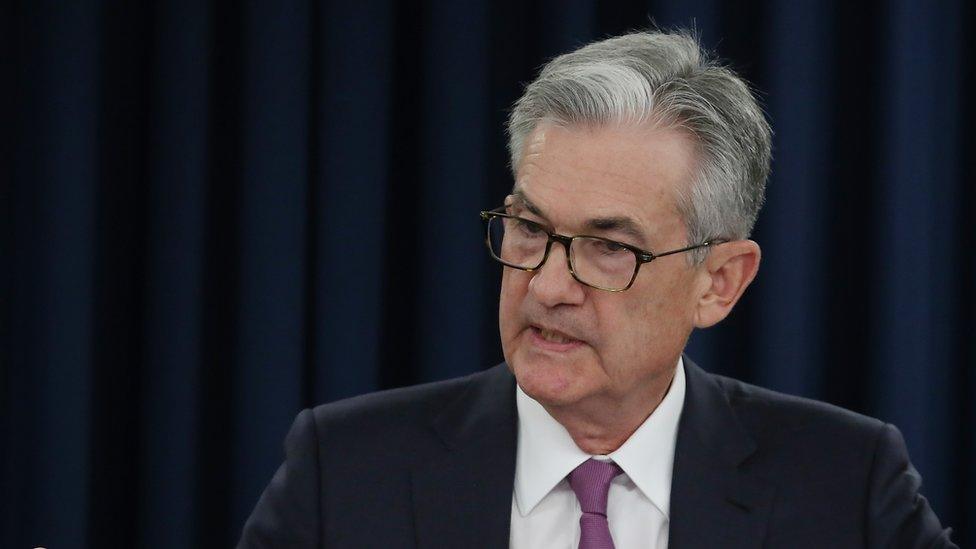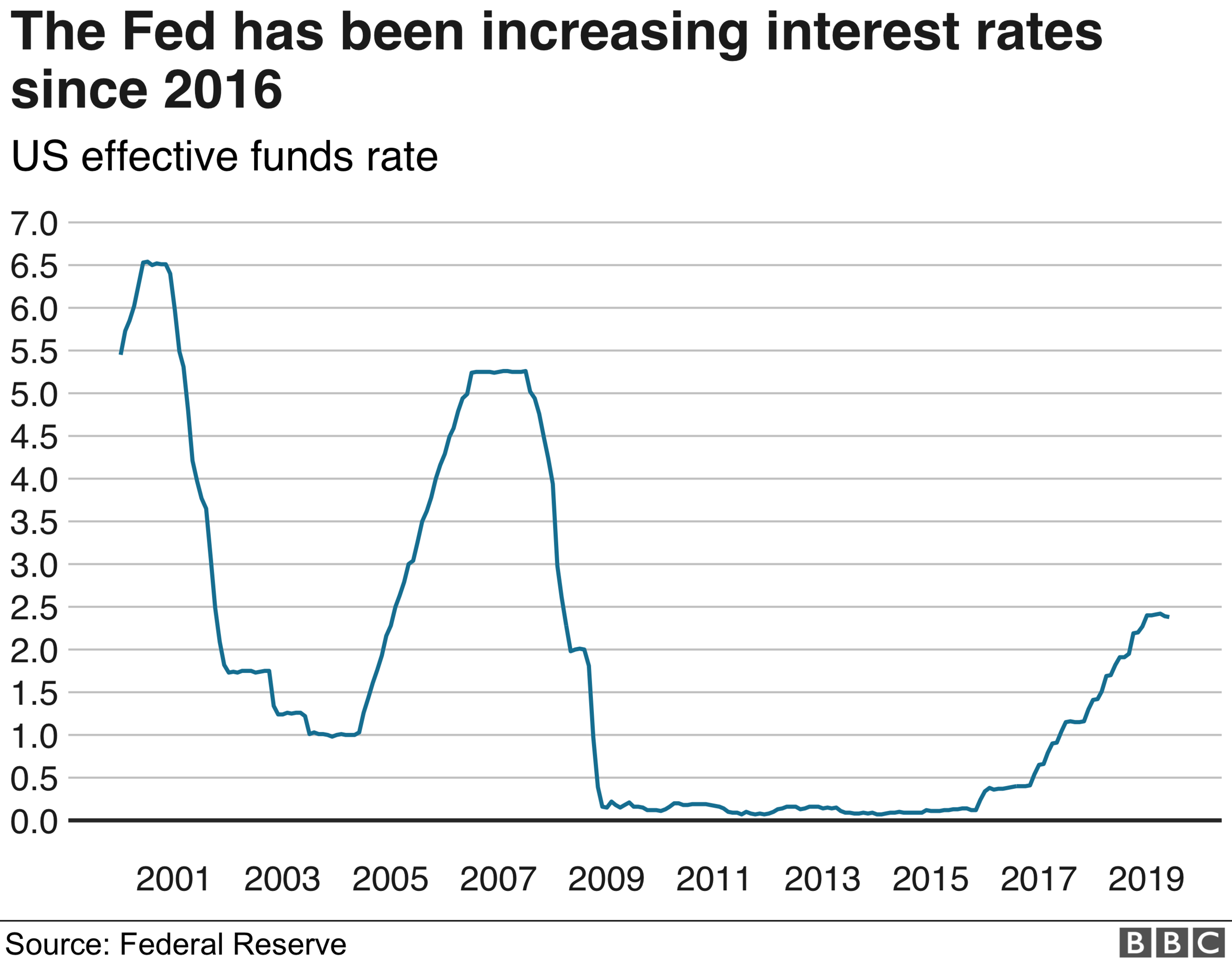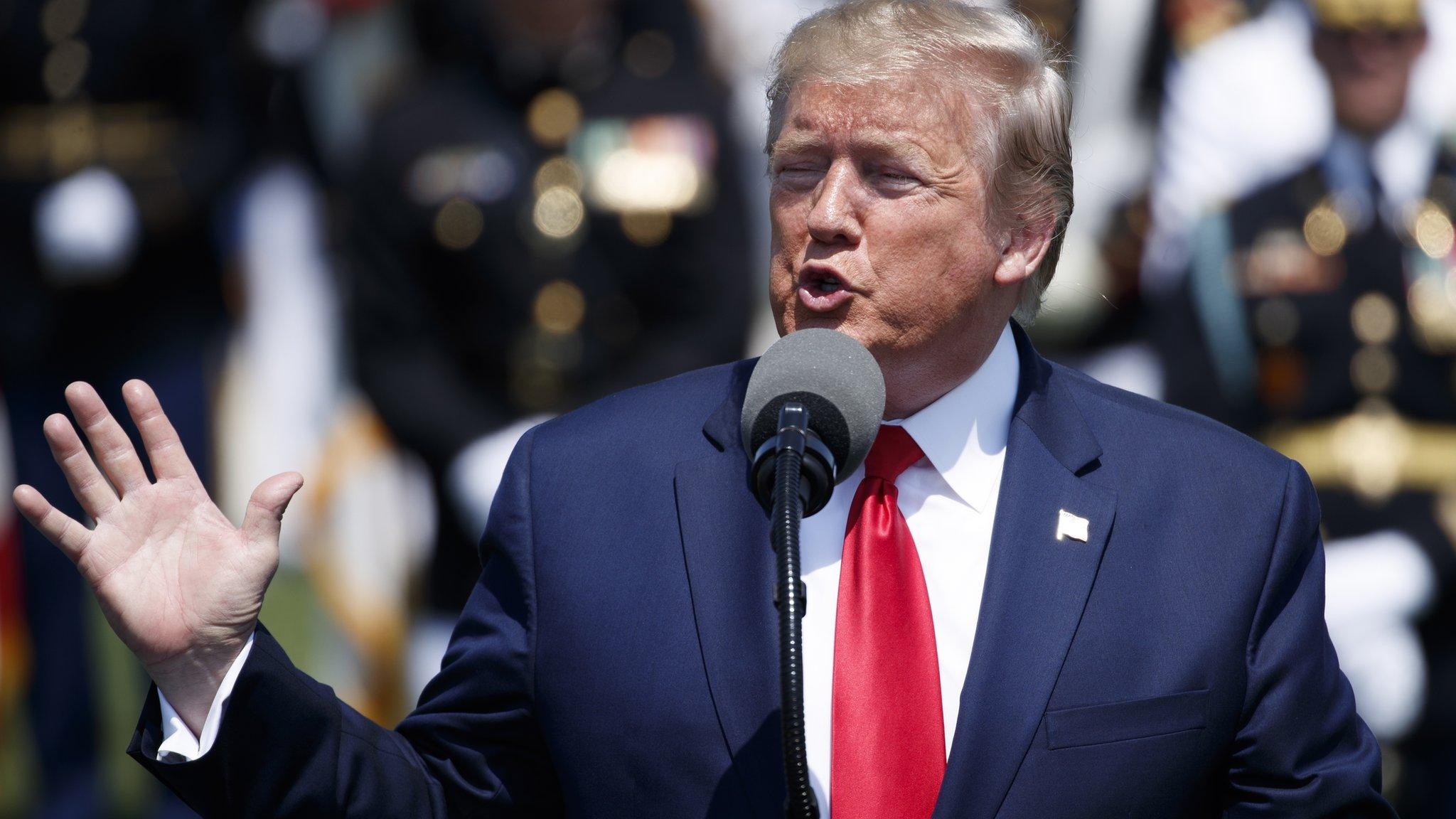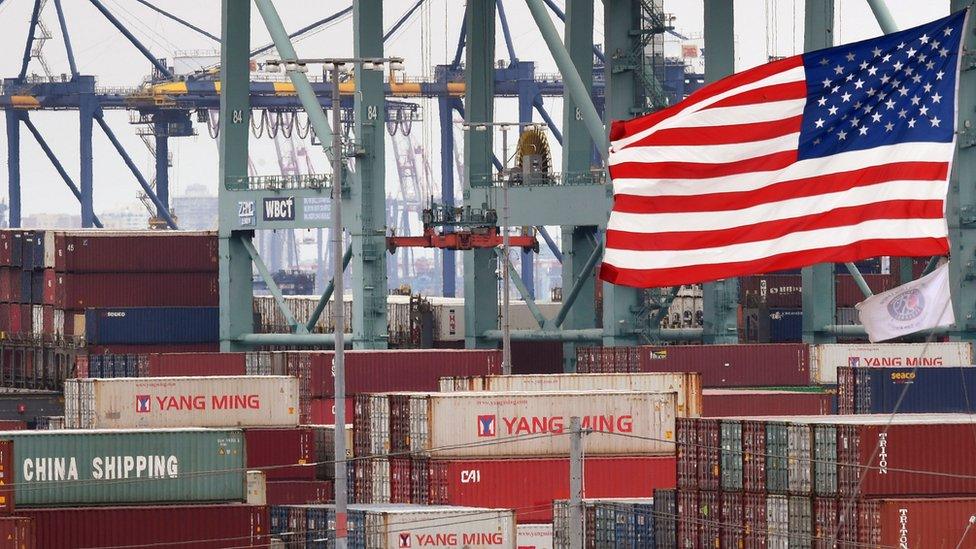Does the US economy need a boost?
- Published
- comments

Fed Chairman Jerome Powell hinted earlier this month that rates could be cut
The US central bank, the Federal Reserve, is expected on Wednesday to cut rates for the first time since 2008.
Traders expect a 0.25 percentage point cut, taking the federal funds target range to 2-2.25%.
Supporters say it will spur a US economy showing signs of needing help.
Critics argue that a rate cut will not help and that the Fed will be pandering to President Donald Trump, who is demanding a big cut.
Why is the Fed expected to act?
Inflation is lower than policymakers would like in the US, languishing at about 1.6% in June. The Fed targets 2%.
Concerns about the US and global economy will also weigh on rate-setters' minds.

The Fed have been raising rates since 2016
Last week, the IMF cut its growth forecasts for the global economy for this year and next. US growth registered at an anaemic annual rate of 2.1% between April and June.
How has the US economy been doing?
US manufacturing, about a tenth of the economy, is the main sector under pressure. It slowed to a low of almost three years last month.
Unemployment hit a 49-year low in May and was at 3.7% last month.
But many of those jobs are in the service sector and are low-paying with low hours, says Megan Greene, an economist and senior fellow at the Harvard Kennedy School.
Often, low unemployment pushes wages up, and with more wages chasing the same products comes the inflation the Fed is looking for. But because the wages of the people being hired are low, that isn't happening. There is also the matter of the trade war with China, which threatens the world's economy.
"None of this will be fixed" by a small rate cut, Megan Greene says.

The US reported this month that permits for home construction dropped to a two-year low in June
Does everyone think it is a good idea?
"I think they will cut rates," said former vice-chairman of the Federal Reserve, Donald Kohn, "and I think there are good reasons for doing that."
While the economy "looks pretty good" and unemployment is low, "I think there are some downside risks to growth, and inflation is running low so it's a good time to take out some insurance," he told the BBC's Today programme.
Cutting rates makes borrowing cheaper for businesses and consumers, and can lead to asset price inflation, or bubbles as that's known.
Mr Kohn says the banking system is much stronger since the last crisis in 2007-9, which should lessen the risk of a similar crash.
One area to watch is corporate debt, which has been growing, he says. US corporate debt, excluding lenders', stands at about $10tn (£8.23tn), up about a half from the crisis.
However, when rates were at close to zero for the seven years after the crisis, it didn't spur much growth, said Ms Greene, leaving one to wonder what a 0.25 percentage point dent will do this time.
Finally, what if it doesn't work? When another true crisis arrives, the central bank will want to cut rates again to stimulate growth and bolster business confidence.
"If it doesn't do much - and I don't think it will - there's a risk of people not thinking it will work again."
Will this keep Mr Trump happy?
No. On Tuesday President Trump called on the Federal Reserve to make a large interest rate cut, interpreted as larger than the expected 0.25.
"I'm very disappointed in the Fed. I think they acted too quickly by far, and I think I've been proven right," Mr Trump said. "The Fed is often wrong,"
- Published26 July 2019

- Published5 July 2019

- Published16 January 2020
